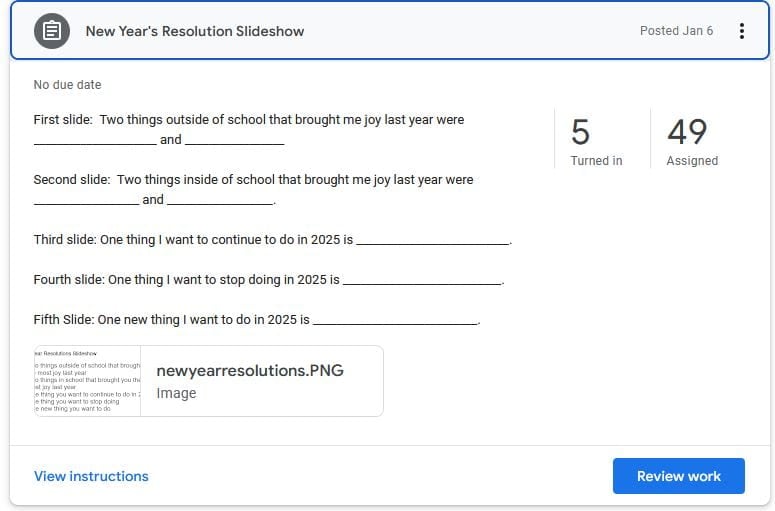Postman vs Bruno vs Requestly: Which One Is Best for You?
API tools have become essential for developers and testers to streamline their workflows. Postman, Bruno, and Requestly are three prominent names in this space, each offering distinct features. In this article, we’ll compare these tools and explore which tool might be the right choice for your needs. Postman Postman is one of the most popular API platforms, widely used for testing, collaboration, and documentation. It offers a comprehensive set of features, making it ideal for large teams. Key Features: API Testing: Simplifies testing REST, GraphQL, and SOAP APIs. Collaboration Tools: Workspaces and version control for team collaboration. Mock Servers: Create mock APIs for testing. Automation: Powerful scripting capabilities with Postman’s built-in JavaScript sandbox. Pricing Free plan: For individuals or a small team of 3 or less to start testing APIs. Basic Plan: Starts at $14 per user/month and includes advanced features like team collaboration, collections *Professional:* Starts at around $29/user/month and adds more features such as private workspaces, multi partner workspace, and more integrations Enterprise: Starts at around $49/user/month and adds more advanced features such as monitoring, and User Groups. Strengths: Extensive documentation and tutorials. Suitable for complex workflows. Strong community support. Limitations: Can feel bloated for smaller or simpler projects. Resource-intensive, especially in enterprise setups. Bruno Bruno is a relatively new API client, focused on simplicity and open-source principles. It offers an elegant interface and caters to developers who prioritise ease of use. Key Features: Open-Source: Open source and community-driven. Clean UI: Offers an intuitive interface for sending API requests. Environment Management: Supports variables for switching between environments. Offline Mode: Works seamlessly offline for local testing. Lightweight: Minimalistic design, ensuring fast performance. Git Integration: Enables collaboration through Git, allowing teams to version control and share API collections easily. Pricing Free Plan: Offering core API testing features with a focus on simplicity and Git integration. Pro: Starting at $6 user/month it provides features like Git UI and Collection to OAS generation Ultimate: Starts at $11/user/month provides support and features like Downloading Test Report and Integration with Secret Managers Strengths: Completely free to use. Lightweight and offline-friendly. Open-source, enabling customization. Git-based collaboration makes it team-friendly. Limitations: Lacks advanced features like request interception and mock APIs. No built-in collaboration tools beyond Git integration. Requestly Requestly’s API client is a unique tool that combines traditional API testing with powerful request interception and modification capabilities, providing developers with unparalleled control over their API workflows. It can be seen as a combination of Postman + Charles Proxy, offering both API request handling and network debugging capabilities. Key Features: Request Interception & Modification: Intercept outgoing API requests and modify headers, query parameters, and request bodies before they are sent to the server. Mock APIs: Create mock APIs to simulate real server responses when the actual backend is not available. Request Logging & Replay: View detailed logs of your API requests and responses. Replay requests with just a click for repeated testing. Cross-Browser Support: Available as a browser extension for Chrome and Firefox, allowing you to interact with APIs directly within the browser. Environment-Specific Settings: Configure different rules for different environments (e.g., staging, production), making testing smoother. Easy Import/Export: Users can seamlessly import and export configurations, including directly importing Postman collections. API Client Features: Includes environment variables support, detailed request history, and workspace organization for enhanced productivity. Pricing Free Plan: Includes all core features of API client like collections, requests, environments etc. Strengths: Real-time debugging and interception capabilities. Available as both a browser extension and a standalone desktop app. Lightweight and browser-integrated for quick access. Powerful rule-based approach to modify and test APIs. Effortless migration from other tools through import/export functionality. Limitations: Newer compared to Postman and Bruno, so fewer third-party integrations. Head-to-Head Comparison Feature Postman Bruno Requestly Cross-platform Support ✅ ✅ ✅ Desktop and Browser Support ✅ (Both) ✅ (Desktop only) ✅ (Both) Collabor

API tools have become essential for developers and testers to streamline their workflows. Postman, Bruno, and Requestly are three prominent names in this space, each offering distinct features. In this article, we’ll compare these tools and explore which tool might be the right choice for your needs.
Postman
Postman is one of the most popular API platforms, widely used for testing, collaboration, and documentation. It offers a comprehensive set of features, making it ideal for large teams.
Key Features:
- API Testing: Simplifies testing REST, GraphQL, and SOAP APIs.
- Collaboration Tools: Workspaces and version control for team collaboration.
- Mock Servers: Create mock APIs for testing.
- Automation: Powerful scripting capabilities with Postman’s built-in JavaScript sandbox.
Pricing
Free plan: For individuals or a small team of 3 or less to start testing APIs.
Basic Plan: Starts at $14 per user/month and includes advanced features like team collaboration, collections
*Professional:* Starts at around $29/user/month and adds more features such as private workspaces, multi partner workspace, and more integrations
Enterprise: Starts at around $49/user/month and adds more advanced features such as monitoring, and User Groups.
Strengths:
- Extensive documentation and tutorials.
- Suitable for complex workflows.
- Strong community support.
Limitations:
- Can feel bloated for smaller or simpler projects.
- Resource-intensive, especially in enterprise setups.
Bruno
Bruno is a relatively new API client, focused on simplicity and open-source principles. It offers an elegant interface and caters to developers who prioritise ease of use.
Key Features:
- Open-Source: Open source and community-driven.
- Clean UI: Offers an intuitive interface for sending API requests.
- Environment Management: Supports variables for switching between environments.
- Offline Mode: Works seamlessly offline for local testing.
- Lightweight: Minimalistic design, ensuring fast performance.
- Git Integration: Enables collaboration through Git, allowing teams to version control and share API collections easily.
Pricing
- Free Plan: Offering core API testing features with a focus on simplicity and Git integration.
- Pro: Starting at $6 user/month it provides features like Git UI and Collection to OAS generation
- Ultimate: Starts at $11/user/month provides support and features like Downloading Test Report and Integration with Secret Managers
Strengths:
- Completely free to use.
- Lightweight and offline-friendly.
- Open-source, enabling customization.
- Git-based collaboration makes it team-friendly.
Limitations:
- Lacks advanced features like request interception and mock APIs.
- No built-in collaboration tools beyond Git integration.
Requestly
Requestly’s API client is a unique tool that combines traditional API testing with powerful request interception and modification capabilities, providing developers with unparalleled control over their API workflows. It can be seen as a combination of Postman + Charles Proxy, offering both API request handling and network debugging capabilities.
Key Features:
- Request Interception & Modification: Intercept outgoing API requests and modify headers, query parameters, and request bodies before they are sent to the server.
- Mock APIs: Create mock APIs to simulate real server responses when the actual backend is not available.
- Request Logging & Replay: View detailed logs of your API requests and responses. Replay requests with just a click for repeated testing.
- Cross-Browser Support: Available as a browser extension for Chrome and Firefox, allowing you to interact with APIs directly within the browser.
- Environment-Specific Settings: Configure different rules for different environments (e.g., staging, production), making testing smoother.
- Easy Import/Export: Users can seamlessly import and export configurations, including directly importing Postman collections.
- API Client Features: Includes environment variables support, detailed request history, and workspace organization for enhanced productivity.
Pricing
- Free Plan: Includes all core features of API client like collections, requests, environments etc.
Strengths:
- Real-time debugging and interception capabilities.
- Available as both a browser extension and a standalone desktop app.
- Lightweight and browser-integrated for quick access.
- Powerful rule-based approach to modify and test APIs.
- Effortless migration from other tools through import/export functionality.
Limitations:
- Newer compared to Postman and Bruno, so fewer third-party integrations.
Head-to-Head Comparison
| Feature | Postman | Bruno | Requestly |
|---|---|---|---|
| Cross-platform Support | ✅ | ✅ | ✅ |
| Desktop and Browser Support | ✅ (Both) | ✅ (Desktop only) | ✅ (Both) |
| Collaboration Tools | ✅ | ❌ (Git Integration) | ✅ |
| Environment Variables | ✅ | ✅ | ✅ |
| API Design and Documentation | ✅ | ❌ | ✅ |
| Scripting with JavaScript | ✅ | ✅ | ✅ |
| Collection Sharing | ✅ | ❌ | ✅ |
| Pricing (Free Tier) | ✅ | ✅ | ✅ |
| Lightweight and Minimalist | ❌ | ✅ | ✅ |
| Mock Servers | ✅ | ❌ | ✅ |
| Team Workspaces | ✅ | ✅ | ✅ |
| Quick Import for Other tools | ✅ | ✅ | ✅ |
| Interceptor | ✅ | ❌ | ✅ |
| HTTP Rules | ❌ | ❌ | ✅ |
Why Choose Requestly?
While Postman and Bruno are excellent API tools, Requestly offers unique capabilities that cater specifically to developers who need real-time request interception, debugging, and rule management. Its lightweight design and browser-first approach make it an excellent choice for modern development workflows.
Additionally, Requestly’s quick import feature and user-friendly interface make it ideal for teams looking to streamline their API testing and request debugging processes.
Conclusion
Choosing the right API tool depends on your specific needs. If you prioritize extensive documentation and API flow automation, Postman is a solid choice. Bruno is an excellent open-source option for those seeking a lightweight and free API client, if you’re looking for a tool that combines request modification, API testing, and debugging in an intuitive package, Requestly is the way to go.
Give Requestly a try today and experience a modern, efficient approach to API management!







![[DEALS] 1min.AI Advanced Business Plan Lifetime Subscription (81% off) & Other Deals Up To 98% Off – Offers End Soon!](https://www.javacodegeeks.com/wp-content/uploads/2012/12/jcg-logo.jpg)




































































